|
|
 |
|
July 29, 2010
Over the past 18 months of this most stubborn recession, many of my good friends in the restaurant business have tried just about everything to lure customers.
Discount wine nights and nights when the corkage is waived have turned out to be popular incentives, and the restaurants fill up when there's a whiff of a deal in the air.
Throughout the recession, San Diego restaurateur Ed Moore has thrived without doing anything more than offering great everday prices with excellent food and charming wine shop ambiance. Ed's model for restaurant wine pricing is the subject of my Creators Syndicate column this week.
 No one can say at what precise moment wine bars became cool all across America. They were once the kiss of death, a sure-fire path straight to bankruptcy court. No one can say at what precise moment wine bars became cool all across America. They were once the kiss of death, a sure-fire path straight to bankruptcy court.
This was a mystifying fate for what seemed a grand idea: a gathering place focused on good wines by the glass, with a few nibbles for background noise. Or perhaps a wine-centric restaurant that serves decent bistro fare with a killer wine selection.
Well-traveled wine enthusiasts knew Europe abounded with successful working models, from Willi's Wine Bar in Paris to Bottega del Vino in Verona to Enoteca Ferrara in Rome.
Willi's annual bottle art wine posters are iconic testimony to the staying power of the genre. Willi's opened in 1980 and continues strong to this day. The posters are collected by wine lovers the world over. The wine list draws its inspiration from France's Rhone Valley, though Bordeaux, Burgundy and other regions of France enjoy representation. By the way, the food's not too shabby.
Opening at about the same time in Verona, Italy, Bottega del Vino unveiled an impressive collection of 80,000 bottles, with 60 to 80 selections poured by the glass every night. During the annual Italy wine show, Bottega del Vino is standing room only without a reservation. Beware the bow-tied waiter elbowing through the crowd with an armload of balloon-shaped crystal stemware! By the way, the food's not too shabby.
Rome's Enoteca Ferrara came along in 1999, offering much the same ambiance and conviviality but with a twist — a wine shop on the premises. Situated in the chic Trastevere neighborhood, Ferrara parlayed upscale cuisine, an extensive selection of wine and the hip, young crowd of one of Rome's most fashionable districts into enduring success. You guessed it, the food's not too shabby.
Until recently, America just didn't get it. Perhaps the stress of having to say Chateauneuf-du-Pape out loud was too much. Perhaps it was fear of the geeky wine waiter, scowling at the uninformed behind that phony smile. Maybe, though I doubt it, no one had quite figured out how to do it right.
I choose to believe it's a simple matter of maturity. Younger Americans of legal drinking age have grown up with wine; their parents and grandparents, not so much. A wine culture has emerged that has both stunned and excited the culinary world. Every other new restaurant that opens is obliged to tack the words "wine bar" at the end of its name. Nothing capitalizes better than capitalism!
While once they weren't even part of the conversation, today wine bars are poised to set the trends that will guide the wine industry for years to come. Wines such as Gruner Veltliner, Albarino, Grenache, Cotes-du-Rhone Villages Lirac, Torrontes, Malbec, Jumilla, Prosecco, Nero d'Avola, et al, would be nowhere in America without the push they've had from wine bars, which go to great lengths to offer selections from the road less traveled.
Click here for the entire column.
Posted by Robert Whitley at 12:09 PM
|
|
July 26, 2010
When I come across a great restaurant burger, I often ask the chef what the secret is. The answer is invariably the same. A great burger requires high-fat ground beef, something in the neighborhood of 20 percent or more.
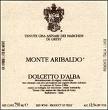 Cook it over a high heat and get the fat inside the meat good and hot. That's where all the flavor (and the juices that run down into the bottom of the bun) come from. Anyone who grills burgers using lean ground sirloin simply doesn't know a good burger. Cook it over a high heat and get the fat inside the meat good and hot. That's where all the flavor (and the juices that run down into the bottom of the bun) come from. Anyone who grills burgers using lean ground sirloin simply doesn't know a good burger.
Anyway, a good burger almost certainly needs a glass of flavorful, juicy red wine to accompany it. That was my topic for a recent Creators Syndicate column.
It's summertime and the living is easy. That means backyards, barbecues and burgers — and for a bit of adult indulgence, burger wines. This is neither the time nor the place for Chateau Lafite, Far Niente or Opus One. Hey, a wine and burger aficionado must have a few simple guidelines!
Rule 1: A burger wine should not cost more than $20. This rule may be broken for special occasions, but generally speaking burger wines ought to deliver exceptional quality at a modest price.
 Rule 2: A burger wine should not be too heavy in oak, tannin or alcohol. The star of the show is the burger. Big, bold, overripe wines and heavily tannic wines have a tendency to get in the way, and their "qualities" are often magnified when outside temps begin to climb. A hot, alcoholic red wine will seem hotter and heavier as the mercury rises. Rule 2: A burger wine should not be too heavy in oak, tannin or alcohol. The star of the show is the burger. Big, bold, overripe wines and heavily tannic wines have a tendency to get in the way, and their "qualities" are often magnified when outside temps begin to climb. A hot, alcoholic red wine will seem hotter and heavier as the mercury rises.
Rule 3: Good balance is a given for any serious food wine, but vibrant fruit is perhaps the most important element of a burger wine. Light wines with wimpy fruit aromas simply won't stand up to the smoky flavors of a grilled burger. I also look for savory notes and spice.
This week's tasting notes are culled from tastings through the first half of 2010. These are wines that deliver both quality and value, while possessing the elements I seek in matching a red wine with a juicy, sizzling burger from the grill.
Click here for my recommended burger wines!
Posted by Robert Whitley at 1:31 PM
|
|
July 17, 2010
Imagine starting the day with a bowl of oatmeal followed by a chaser of fourteen different Rieslings. That’s what I’m doing this morning, at the opening event of the third Riesling Rendezvous. This event, dedicated to furthering the understanding of Riesling, is co-hosted by Chateau Ste. Michelle, the Washington state winery (arguably the premier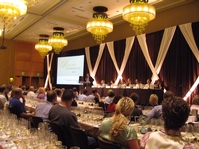 Riesling producer in the United States) and Dr. Loosen, an esteemed estate in Germany’s Mosel region. Riesling producer in the United States) and Dr. Loosen, an esteemed estate in Germany’s Mosel region.
Riesling is likely the least understood, most undervalued of all the world’s so called noble grapes. Misconceptions about Riesling are rampant. Ask people about it and they’ll tell you that Riesling is always sweet. Riesling is confusing, they’ll say, and it doesn’t age well. Some wine drinkers will insist that German Rieslings are superior to Riesling from the new world, while other folks will insist that only the new world knows how to make fresh, approachable Riesling. In the hopes of untangling some of this confusion, I’ve come to Washington state, where Riesling Rendezvous is unfolding.
Events kicked off with the Grand Tasting at Chateau St. Michelle, a walk-around nosh-and-sip event open to both consumers and wine trade professionals. Dozens of vintners from all well known regions (France, Germany, Australia) and smaller players such as Michigan and Canada are pouring their wines. It is fun and festive, and a great introduction to the rest of the Rendezvous.
So this morning, after wolfing down breakfast, I’m sitting down with the other Rendezvous attendees to taste these fourteen dry Rieslings from around the world. The wines are, of course, tasted blind, so like everyone else, I’m trying to figure out which are old world wines and which come from the new world. In my case, anyway, it proves a humbling experience. In my tasting notes, for example, I describe one  wine as “light, delicate, very crisp--probably from a cool growing region in the US.” Nice try, but it turns out to be from New Zealand’s Villa Maria Estate. I’m clueless when it comes to a stupendously long, juicy and balanced wine (Bründlemayer Heilingenstein 2008, as it turns out). wine as “light, delicate, very crisp--probably from a cool growing region in the US.” Nice try, but it turns out to be from New Zealand’s Villa Maria Estate. I’m clueless when it comes to a stupendously long, juicy and balanced wine (Bründlemayer Heilingenstein 2008, as it turns out).
And so it goes, I’m right about some of the wines’ origins, wrong about others. But what I do take away from the experience is a heightened appreciation for the extraordinary range of stylistic diversity that the Riesling grape can yield. And here’s something else I take away: the notion that perhaps these old world/new world distinctions are no longer valid. That’s the beauty of events like this, where participants not only taste fabulous (and occasionally not-so-fabulous wines), and meet producers from all over the world--what some of us also do is try to do is open our minds to new ways of thinking about and appreciating wine. I remember one of the things that Riesling importer Terry Thiese said at the last Riesling Rendezvous: “Form impressions but do not invest in maintaining them in order to have been ‘right.’ Listen to the wines, and follow their stories.” Good advice for us all. In addition to tasting a lot of now, I’m also going to try to listen to their stories.
* * *
[WRO is at Riesling Rendezvous in force, with more attendees than any other wine publication. On site with Marguerite Thomas are contributors Paul Lukacs, Michael Apstein, Linda Murphy, W. Blake Gray, and Michael Franz, along with occasional contributor Rebecca Murphy. For more on the world's premier Riesling symposium and the best of the wines showcased there, stay tuned.]
Posted by Marguerite Thomas at 9:49 AM
|
|
July 8, 2010
Over on Twitter, and in other forums I suppose, my friend and colleague William Tisherman, otherwise known simply as Tish, continues to flog the "controversy" over numerical wine ratings.
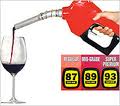 He is joined in combat from time to time by others who view the practice of assigning a number to a wine review as an affront to common sense. Their argument, if I am hearing them right, is that no cold, hard number can adequately define a given wine. He is joined in combat from time to time by others who view the practice of assigning a number to a wine review as an affront to common sense. Their argument, if I am hearing them right, is that no cold, hard number can adequately define a given wine.
We have no disagreement there. We use numerical ratings here at Wine Review Online and I use them in my syndicated wine column because for many consumers, it is the number that gets their attention and the number that causes them to take a closer look at the wine.
That number, which I have often described as nothing more than an "applause meter" measuring only one specific critic's enthusiasm for one particular wine, is always accompanied by text that describes the wine in some detail, and what it was about the wine the critic loved -- or, in some cases, didn't.
But let me ask this: If not a number, what then as a lure to the consumer? Puffs, which is what Connoiseurs Guide once used? Ambiguous headings such as Excellent, Exceptional, Good, Very Good, et al? Grades, such as A+, B-, C+ or, heaven forbid, F! Is any quantitative measurement adequate? Or should we only measure our pleasure in a wine through the decibel level of our prose?
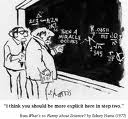 The reality is that most consumers understand a numerical scale and can relate that to the wine reviewer's level of encouragement to purchase a particular wine. I don't see anything wrong with that. The reality is that most consumers understand a numerical scale and can relate that to the wine reviewer's level of encouragement to purchase a particular wine. I don't see anything wrong with that.
What I don't understand or get is this: Why would one reviewer criticize another over the presentation of a recommendation? Why is it an issue? If some critics prefer the 100-point scale and choose to use it for their publications or web platforms, I assume they do so because they believe it serves their constituents. If some critics prefer other devices, bully for them! If some consumers follow the scores, so what? If others prefer text-only recommendations and don't fall asleep from the repetitiveness of the descriptors in the Chardonnay reviews, fine by me!
Publishers and critics must decide for themselves what's best for their platform. The audience will follow where it feels most comfortable. Build a bad model, you lose. Readers will flock elsewhere.
I say to each his own. Is this even a controversy? Please.
Email comments to whitleyonwine@yahoo.com or Tweet @wineguru.
COMMENTS
mighein: The blog entry was truth fwd, strong Puffs in the midpalate but the finish could have been longer. 91 pts.
RonMcFarland: My take on the ratings conversation is - it is just part of wine evolution - better to be part of than not - best wishes
Posted by Robert Whitley at 1:37 PM
|
|
July 7, 2010
 It was with great interest that I read WRO Editor Michael Franz' Barolo report this week. It was with great interest that I read WRO Editor Michael Franz' Barolo report this week.
Barolo, IMHO, is among the world's most important red wines. More important now than ever because of the feeding frenzy over the 2009 vintage of Bordeaux, which none other than critic Robert Parker has characterized as the vintage of his lifetime.
I have no qualms about the excitement being generated by '09 Bordeaux. It is a very, very sexy vintage, although in my own experience I would not rate it as highly as Parker, the Mr. Bordeaux of our time.
Nevertheless, Parker is on record and the markets are rocking because top-drawer Bordeaux is now more expensive than ever. So what's a poor (you can take that literally if you wish) wine enthusiast to do? I can't get anywhere near the first growths or so-called "super seconds" available in the '09 Bordeaux futures pool, but I do have several open slots in my cellar courtesy of a visit by Franz and friends in May.
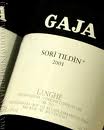 Hence my interest in his Barolo assessments. I'm in the market for collectible red wines that I can cellar for a decade or more and enjoy after they've reached maturity. Hence my interest in his Barolo assessments. I'm in the market for collectible red wines that I can cellar for a decade or more and enjoy after they've reached maturity.
Other than Bordeaux and Burgundy, my favorite wine collectibles come from Italy -- Barolo, Barbaresco, Brunello di Montalcino, the Super Tuscans and a handful of the remarkable Aglianico-based wines of Campania and Basilicata.
The best from these regions are renowned for their longevity, and mature to greatness in the same fashion as fine Bordeaux and Burgundy. And here's the sweet part -- though no one would describe these wines as cheap, or even inexpensive, they are a fraction of the cost of an '09 first-growth Bordeaux.
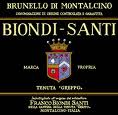 Two of the most coveted producers from these areas, Gaja and Biondi-Santi, might go for as much as $250 a bottle from a good vintage, though I have found both for less. All of the others are much less, even for the best wines from the best vintages. Two of the most coveted producers from these areas, Gaja and Biondi-Santi, might go for as much as $250 a bottle from a good vintage, though I have found both for less. All of the others are much less, even for the best wines from the best vintages.
Just for fun, here is a brief wish list:
1. Gaja Sperss
2. Biondi-Santi Riserva Brunello di Montalcino
3. Feudi di San Gregorio Serpico
4. La Massa Georgio Primo Chianti Classico
5. Il Poggione Riserva Brunello di Montalcino
6. Ceretto Barolo Bricco Rocche
Next time you need a "great wine" fix for your cellar and you haven't yet hit the lottery, spend a minute or two in the primo Italian section at your favorite wine shop. You won't die of thirst!
Click here for related column.
Posted by Robert Whitley at 12:18 PM
|
|
July 2, 2010
From my Creators Syndicate column this week:
Though I didn't attend, I followed the third annual Wine Bloggers Conference in Walla Walla, Wash., with great interest. That was easy enough to do because the bloggers inundated Twitter and Facebook with frequent updates as the event proceeded.
 Most of it was innocent banter, some of it highly entertaining, but there was one post on Facebook that gave me pause. The headline on the post, authored by blogger Tom Wark, read "Wine Writers vs. Wine Writers." Wark knows a thing or two about wine writers after a long career in wine public relations. Most of it was innocent banter, some of it highly entertaining, but there was one post on Facebook that gave me pause. The headline on the post, authored by blogger Tom Wark, read "Wine Writers vs. Wine Writers." Wark knows a thing or two about wine writers after a long career in wine public relations.
In his post, Wark seemed to be drawing a distinction between those who write about wine for print and those who've only been published digitally. My takeaway was that Wark — who has championed wine bloggers from the start and is no dispassionate observer — sees the two camps as snarky rivals, with the upstarts slowly but surely gaining the upper hand in the court of public opinion.
As one of the many wine journalists who publishes in both print and on the Web, I was both mystified and slightly miffed by the characterization. I never have and never will believe the medium is the message. Whether you are reading this in a newspaper or on the Internet, one thing is certain: You will only read this column as long as the information serves and/or entertains you.
The "us vs. them" narrative is largely a figment of the imagination, though I won't deny that there have been heated exchanges in a number of forums between print wine journalists and wine bloggers. People with strong opinions will sometimes disagree. I imagine there have been heated blogger vs. blogger exchanges, too.
 Whether they work for print or publish to the Internet, wine writers are driven by the same forces. They must communicate their ideas with clarity. They must work hard every day to establish and maintain their credibility. And, perhaps most importantly, they must find their voice — that stylistic nuance that makes you recognize them in a crowd. Whether they work for print or publish to the Internet, wine writers are driven by the same forces. They must communicate their ideas with clarity. They must work hard every day to establish and maintain their credibility. And, perhaps most importantly, they must find their voice — that stylistic nuance that makes you recognize them in a crowd.
To fail at any of those objectives would most likely lead to failure, regardless of the medium. I certainly don't consider wine bloggers the enemy. In an increasingly digital age, I consider myself one of them. I haven't the foggiest idea why Mr. Wark thinks otherwise.
Posted by Robert Whitley at 1:50 PM
|
|
July 1, 2010
Considering a majority of American wine drinkers consume most of the wine they buy within 24 hours, it may seem odd that so many reviewers -- myself included -- make a big deal about longevity.
 I was reminded of this when I recently dropped in on Gary Eberle, the Godfather of Paso Robles wine, and caught him in the act of opening Paso Cabernet Sauvignon and Syrah from the 1970s. I was reminded of this when I recently dropped in on Gary Eberle, the Godfather of Paso Robles wine, and caught him in the act of opening Paso Cabernet Sauvignon and Syrah from the 1970s.
Those wines were produced in the Dark Ages of Paso wine, a time when the wines of that period were not highly regarded and easily overlooked. Some of the wine poured on this night was made at the Estrella River Winery in 1978 and 1979. Estrella at the time was a family owned winery, one of Paso's most ambitious brands, and Gary was the winemaker.
He also poured Cabernet and Syrah from the early years of the Eberle Winery. All of the wines were 30 years old or more, and all were in excellent condition, even exhibiting primary fruit aromas and color you might have expected to be long gone.
I made this the subject of a recent Wine Talk column for the Creators Syndicate, which you can read by clicking here.
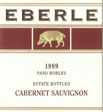 Now I know you can't just run out and buy a bottle of 30-year-old Eberle Cab for your cellar. There are only a few cases left in the world and Gary owns most of those. Now I know you can't just run out and buy a bottle of 30-year-old Eberle Cab for your cellar. There are only a few cases left in the world and Gary owns most of those.
My larger point, however, is the level of quality that is rightly associated with wine that possesses that kind of aging potential. Even if you intend to drink your purchase tonight, if you are truly interested in tasting great wine, look for one that has staying power.
You'll never go wrong!
Posted by Robert Whitley at 12:17 PM
|
|
 |
|